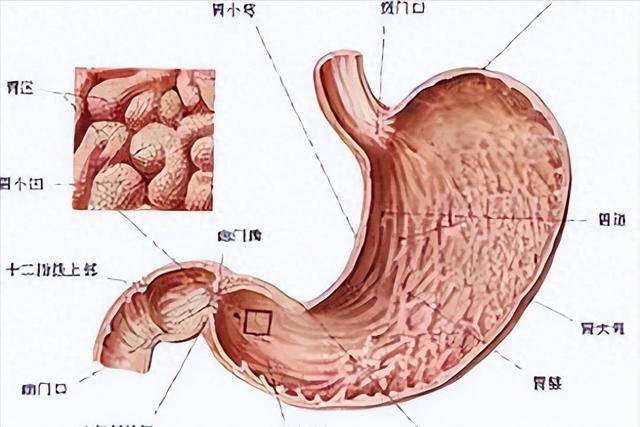Before reading this article, we sincerely invite you to click “Follow” so that we can share professional medical knowledge with you every day, helping you and your family enhance the quality of healthy living. Thank you for your support!
An Overview of Atrophic Gastritis and Patient Confusion
Atrophic gastritis, a name that sounds troubling, is a common stomach disorder. Many people feel overwhelmed after being told they have atrophic gastritis during a health check-up. Although most patients with atrophic gastritis do not have severe conditions, the disease can be managed through proper treatment and adjustments in lifestyle.
Many people are still confused: If diagnosed with atrophic gastritis, how should one adjust their diet? Today, we will discuss this topic and share three types of foods that doctors recommend minimizing, which can indeed have remarkable effects over time.
Reduce intake of these three: high salt, high fat, and fried foods
High salt foods. A high-salt diet increases the burden on the stomach mucosa, affecting its ability to repair. Long-term consumption of high-salt foods not only leads to high blood pressure but also exacerbates damage to the stomach mucosa. High-salt foods stimulate excessive gastric acid secretion, causing even greater harm to the already damaged stomach mucosa. It is crucial for gastritis patients to minimize salt intake.
High fat foods. High-fat foods not only increase body weight but also prolong gastric emptying time, worsening gastritis symptoms. Consuming too many high-fat foods forces the stomach to spend more time digesting, thereby causing more severe damage to the stomach mucosa. High-fat foods can also cause bile reflux, which is another irritation to the stomach mucosa. Therefore, patients with atrophic gastritis should choose low-fat diets to reduce the burden on the stomach.
Fried foods. Fried foods produce a large amount of carcinogenic and harmful substances during the high-temperature frying process, which significantly irritate the stomach mucosa. Long-term consumption of fried foods not only makes it easy to gain weight and have high blood lipids but also causes stomach discomfort, potentially worsening gastritis symptoms. Patients with atrophic gastritis should avoid fried foods and choose light, easily digestible foods instead.
Other Key Points for Dietary Adjustment
Besides reducing high salt, high fat, and fried foods, patients with atrophic gastritis should also pay attention to other dietary adjustments. They should minimize spicy and irritating foods, such as chili and pepper. These foods can further damage the stomach mucosa and worsen the condition.
Consume more fiber-rich foods like vegetables, fruits, and whole grains. These foods promote intestinal motility, aid digestion, and relieve the burden on the stomach. Meals should be taken at regular times and in appropriate portions to avoid binge eating. Overeating increases the burden on the stomach and affects the repair of the stomach mucosa. Regular dietary habits are crucial for the recovery from gastritis.
Patients with atrophic gastritis should also be mindful of the temperature of their food. Foods that are too hot or too cold can irritate the stomach mucosa and affect its ability to repair. A diet that is warm is advisable; avoiding excessively cold or hot foods can better protect the stomach mucosa.
Consult a Professional Doctor
One clear point for patients with atrophic gastritis to understand is that individual differences are significant; each person’s condition, constitution, and lifestyle habits vary. The advice of a professional doctor is particularly important. After diagnosis, the first step for patients is to consult a professional doctor to select an appropriate treatment plan based on their specific condition. The doctor will evaluate the extent and degree of mucosal atrophy based on the results of the patient’s gastroscopy, deciding if medication or other intervention measures are necessary.


